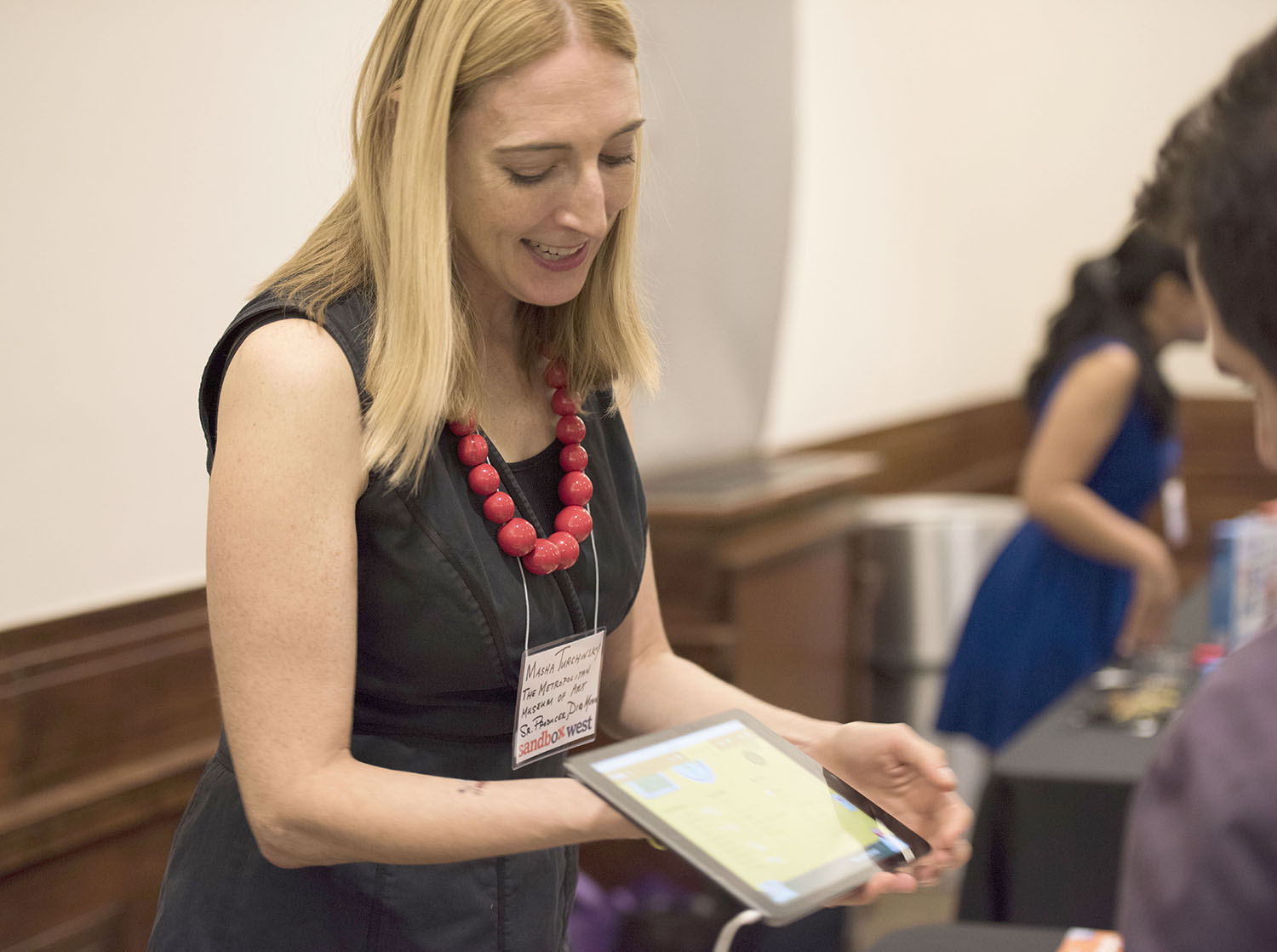Conference centers around new tech in children’s play

Child’s play · Attendees participated in hands-on workshops during the conference on Monday at the California Science Center. – Anastasia Velicescu | Daily Trojan
PlayScience kicked off its Sandbox West Conference at the Annenberg Center in the California Science Center on Monday. The conference, which focuses on innovation in child development and play, will continue into Tuesday evening.
Founded in 2008, the Sandbox Summit is organized by PlayScience, a company focused on how play is developed in a world dominated by technology and innovation. Wendy Smolen, one of the original founders of the summit, explained that the development of media and technology has changed the way children play as they develop. Toys are becoming less popular, while electronics have turned into toys and learning devices. This summit provides a platform for discussion about the future of play and the products that are currently on the market.
While Sandbox has hosted events in Boston and New York City, this is the first time a summit has been held on the West Coast. The event was coordinated by Erin Reilly, managing director for the Annenberg Innovation Lab. She had worked at MIT with several of the leaders at PlayScience and knew that they were looking to expand the summit. She suggested that the Innovation Lab and PlayScience should collaborate to bring the conference to Los Angeles.
“The way that we look at play is changing in a lot of ways,” Reilly said. “What [the summit] does is it allows people to get their hands dirty and to experience [play] hands-on, and then to take what they learned back to their communities to apply it with what they are personally doing.”
Reilly said that play is far more important for children than most realize. Play is how children form basic social and mental patterns. The introduction of technology into children’s formative years has had a unique impact on the way children are growing up. It also affects the affordability of the way children are raised, creating a wider gap in the way that children from different socioeconomic backgrounds play. The idea behind the summit is that the way children play — in the “sandbox,” whether that is video games or in their backyard — is instrumental in the way they develop.
“There’s a huge implication in the way that media impacts children, even from a young age,” said Francesca Marie Smith, a research fellow at the Annenberg Innovation Lab who has been instrumental in helping Reilly coordinate the summit. “It’s important to emphasize the way that play, something so basic and yet so critical, can affect our futures.”
The Sandbox Summit spanned Monday and Tuesday and provided a variety of workshops, keynote speakers and networking events. On Monday, attendees could spend time in four different workshops, which ranged from conversations over mobile apps and technology privacy to hands-on sessions experimenting with equipment from the LA Makerspace. Attendees also had the opportunity to participate in a scavenger hunt throughout the California Science Center and a virtual reality tour using the Oculus Rift headset.
On Monday night, the conference hosted a cocktail party hosted by Intel. The event is one of the reasons that Smolen wanted to keep the conference small — it was predicted to sell 125 tickets and greatly exceeded that number. The party allowed students and teachers to see the newest products in child development and play, while also discussing future concepts in toy innovation.
One of the headliner events on Tuesday features Dylan Siegel, a nine-year-old boy who published a book, Chocolate Bar when he was six years old. He wrote the book to raise money to research a cure for GSD Type 1b, a rare liver disease that affected one of his best friends. Three years later, the book has sold over 300,000 copies to raise over $1,000,000 and is credited with accelerating the cure to the disease by decades.
“The beauty in it is that this is a 360-degree learning experience,” Smolen said. “We learn from these kids, and they show us how we can continue to teach them better, and the cycle continues on like that. That’s what it’s all about — continuing to learn from each other so that we can innovate and look forward to the future.”
